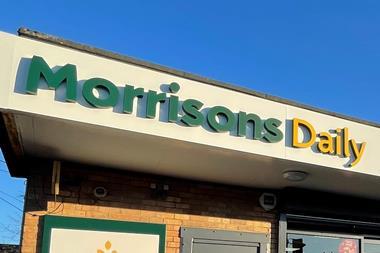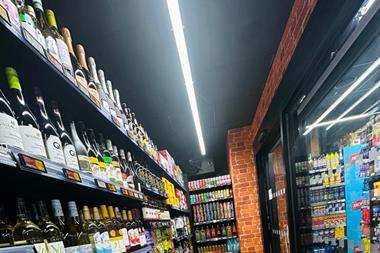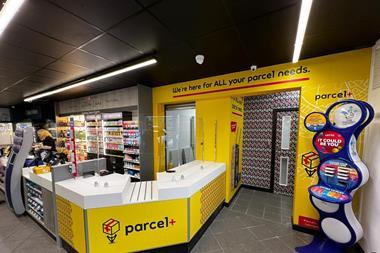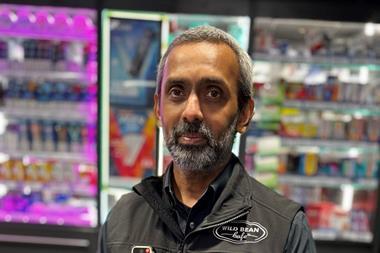What customers want from their local store is not always as simple as the lowest prices, as more retailers are finding out. C-Store takes a closer look at what makes shoppers tick
If you’re poring over price lists, madly comparing cash and carry promotions and still losing out to the supermarkets, could it be that you’re missing what it is your shoppers really want? Keeping customers satisfied is the holy grail of retailing, and there is growing evidence to show that it’s not always the lowest prices.
For its Convenience Tracking Programme HIM Research & Consulting visited more than 1,400 stores, spending more than 8,000 hours speaking to 20,000 shoppers and collating more than 100,000 responses, to find out what shoppers say is important to them in a convenience store.
It found that ease of shop tops the list, with seven out of 10 shoppers citing this as their main priority. Staff friendliness/helpfulness came next, followed by product availability, cleanliness of store and range of products. Value for money came in at a lowly number six on the list.
Sales Assistant of the Year Tracie Horner, of Spar Carrowdore, County Down, believes that while price and store standards are important, more and more people appreciate good service in a store. “Of course, there has to be a mix of good prices and store standards,” she says, “but people expect to be treated well. Here we like to treat people as we would like to be treated ourselves.”
The result is that the store sees a lot of repeat business. “Even the caravanners who come on holiday here come back time and again,” she asserts. And they notice the positive changes to the store, such as the recent refurbishment which doubled the store’s size, adding a greater selection of goods, as well as car parking and a post office. “The response was really positive, with comments such as ‘Wow, isn’t it lovely’. But they were also happy to see the same staff as people like to see old faces.”
Tracie says herself and the rest of the team make a point of getting shoppers’ reactions to the store, service, and any new products. “We get feedback by talking to people and don’t seem to ever get any negative comments,” she says.
Louise McWhirter, head of insights and digital at HIM, believes that small stores’ overheads mean they are never going to match the prices seen at discounters and supermarkets, so retailers need to “go above and beyond in delivering what is important to shoppers”.
“Convenience is key and so a logical flow, clear signage and neat fixings are imperative to deliver on ease of shop. Staff friendliness is a USP for many convenience stores and is something that is really valued by local shoppers. As well as ease of shop, staff make the in-store experience what it is”, she says.
“We’re towards the side of customer service rather than being price led,” asserts Dougie Anderson, business development manager at Eros Retail, a group of five stores in Scotland. “We see customer service as our top priority in the stores, followed by high store standards and local values. Price isn’t even in our top five.”
He says staff are made aware of the priorities from the outset, even at interview stage, and that the good relationships also ensure that stores stay on top of what shoppers want. “Customer service is very important to us and we make clear our high expectations. We want the staff to chat with customers, find out what they think and they can then feed that back to us.”
Anderson points out that social media is another key route to connecting with shoppers and garnering reaction to what the store is doing. “We’re really prominent on social media, especially on Facebook; we’re learning from Facebook all the time. It’s a good way for customers to get back to us about what they enjoy about the store and what we can improve and what we do well.”
The Eros Group also uses Experian analysis to check demographics on an ongoing basis, particularly when opening a new store, but Anderson points out that such analysis isn’t always foolproof. When the group opened its latest store in Tilliecoultry, it tailored the experts’ advice with its own knowledge of the local community. “You can’t be too rigid. For example, we changed our bakery supplier to a more local premium supplier last year and even though the prices are more expensive, bakery sales went from £500 a week in one of the stores to £2,000 a week, and that was in quite a poor economic area.”
When Midcounties Co-op embarked on a major survey into its shoppers’ response to their experience in its stores 18 months ago, the reactions threw up some unexpected results and set the chain on a wide-ranging improvement programme, spanning staff training to replenishment, and even how the stores were being cleaned.
The group realised that suggestion boxes in stores generally only gave feedback on ranges shoppers would like to see, and that operational factors were governing decisions, without considering what’s best for its customers. “It was realised the business had a longstanding culture of decisions based on logistical factors such as delivery times, who’s available at what time to open up and close, rather than what the customer wants,” explains Melody Aguero, marketing & insights manager.
Ask your audience
The company turned to technology to investigate customers’ thoughts further, linking up with InMoment, a leading customer experience intelligence provider. Messages on receipts urged shoppers to go online and fill in a feedback form, with £200 a month up for grabs as an incentive. The scheme was given a big fanfare in stores and staff were also asked to prompt shoppers. To maintain awareness, a second stage involved staff putting receipts in specially-produced wallets with the message to head to the online portal and take part in the survey.
The initiative worked and more than 25,000 responses were collected in the first 12 months. Alongside queue management - “customers wanted to come in and get what they wanted straight away” - the project highlighted an area that Aguero says it hadn’t realised was necessarily that important, or didn’t realise wasn’t up to scratch. “What surprised us was that it was first impressions of the store that we were scoring the lowest on,” she reveals.
Shoppers raised concerns about gaps in shelves - “even if they could find what they wanted in store, the impression of immediately seeing gaps was very off-putting,” explains Aguero. “Cleanliness and general standards when you first walk in were mentioned, as were not feeling particularly welcome, not having the right range at entrance and seeing cages as you walk in and seeing them on the on shop floor during delivery times.”
So Midcounties Co-op began implementing a widespread improvement plan. A replenishment programme tackled deliveries in order to reduce gaps, particularly in food-to-go areas at the front of the store; staff were given more responsibility for cleaning on an ongoing basis rather than relying on cleaning staff at set times of the day, with self-cleaning machines made available. Efforts were also made to improve the look of the entrance, with regular checks instead of just once a day.
Staff training has been put at the heart of the changes, with a customer experience training programme based on the four key areas the survey focused on: first impressions, availability and range, till experience and customer service (FACT).
“The customer experience programme looks at all those areas to give a better impression.
“It’s changing the focus and changing the culture as now we’re placing the customer at the focus of everything, even those operational factors. It’s not just about customer service,” Aguero adds.
The work has paid off as, since the programme launched, the business has seen a 5% year-to-date increase in its Customer Loyalty Index and a 6.6% increase in overall satisfaction.
Melody Aguero believes it is now at the point where it can look further into its customers’ psyche.
“We’re at the stage now in the customer insight programme where we can delve into a little bit more detail and split into areas, such as why our men shoppers tend to be a little more dissatisfied than female customers, or how can we attract younger customers, or why only 10% of shoppers use c-stores for the meal for tonight mission.”
So next time you think your shoppers are leaving as satisfied customers, perhaps it’s worth digging a little deeper and finding out exactly what keeps them spending.
Customer service
Tracie’s tips for good customer relations

Sales Assistant of the Year 2016 Tracie Horner has these tips for building relationships with shoppers:
Remember their names - customers like to be greeted by their first name as it shows you listen and makes them feel welcome
Remember things about them - take note when they’ve picked up a certain product as you can ask them how they liked it when they come in again, or make a point of noticing when a customer has had a baby and comes in with their new arrival.
Customer service pays
Consumers say they would choose to pay an average of 17% more for outstanding customer service levels, according to a survey by The Institute of Customer Service.
The Institute of Customer Service CEO Jo Causon says: “We know that an increasing proportion of people are willing to pay more for better service and these new statistics are testament to that. Customer experience will be everything in the post-Brexit economy.”
Causon adds: “Our research finds that ‘recommendation from others’ and buying from ‘a trusted brand’ both remain crucial factors influencing consumer spend, meaning that businesses who invest in these areas will get the best returns, both now and when Britain formally departs from the EU.”
The survey also shows there are demographic differences in shoppers’ willingness to spend on service. Consumers from the South East would spend an average of 21% more to guarantee service levels - whereas those from the North average at 15% extra spend.
Age also plays a part. Those aged 18-34 across the UK are particularly well disposed towards spending on good service - willing to pay an average of 23% more.
How to keep them happy
If customers aren’t happy with an aspect of your store, how do you avoid hearing about it along with everyone else via social media? In April, Northern Ireland Spar distributor Henderson’s introduced Tell us First, a campaign to gauge customer satisfaction fast.
Eurospar customers can leave feedback, good or bad, via a QR code visible in store, a URL code printed on the customers’ receipt, or via an in-store kiosk.
The survey is easy to complete, on average taking less than three minutes, and if their experience is such that they want to escalate a problem, the customer can request a call back. Retailers receive an email advising them and the customer’s details.
The chance to win £100 in a monthly draw incentivises shoppers to take part.
Henderson says the percentage of customers who go on to complete the entire survey and leave contact details is 83%. So far it has had almost 7,000 survey questions answered by 1,700 customers, with 929 customer satisfaction clicks in June alone.





















1 Readers' comment